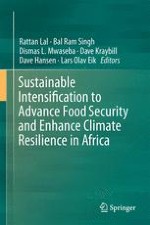2015 | OriginalPaper | Buchkapitel
22. A Risk-Based Strategy for Climate Change Adaptation in Dryland Systems Based on an Understanding of Potential Production, Soil Resistance and Resilience, and Social Stability
verfasst von : Jeffrey E. Herrick, Adam Beh
Erschienen in: Sustainable Intensification to Advance Food Security and Enhance Climate Resilience in Africa
Aktivieren Sie unsere intelligente Suche, um passende Fachinhalte oder Patente zu finden.
Wählen Sie Textabschnitte aus um mit Künstlicher Intelligenz passenden Patente zu finden. powered by
Markieren Sie Textabschnitte, um KI-gestützt weitere passende Inhalte zu finden. powered by
